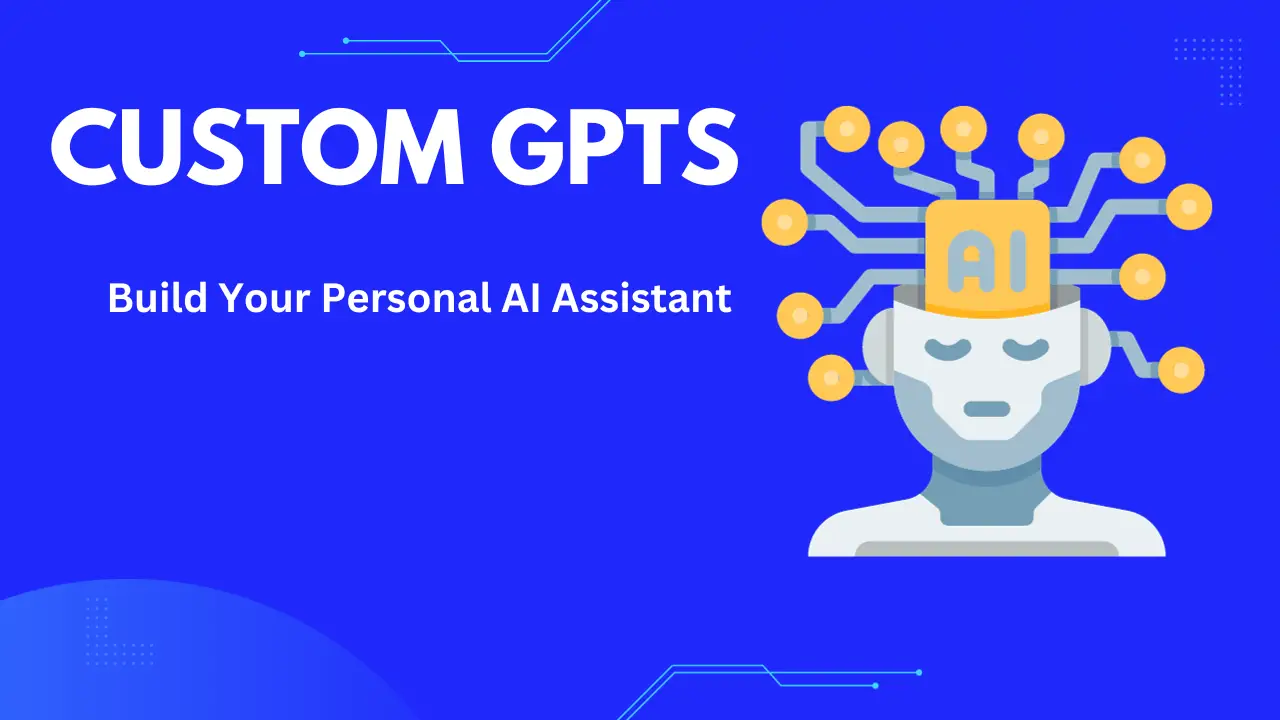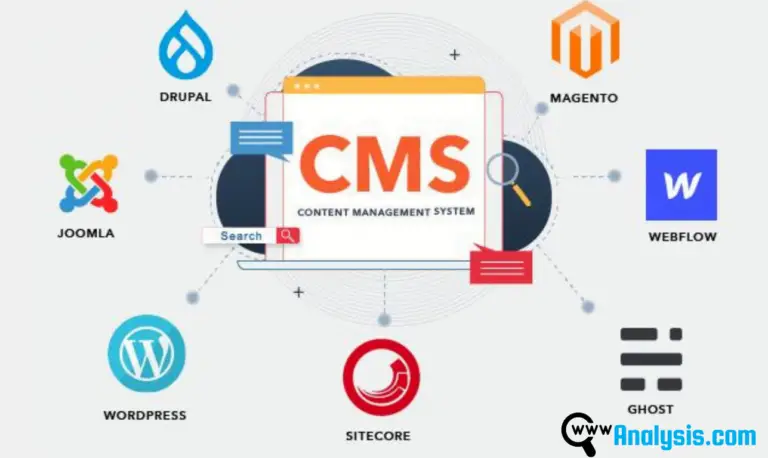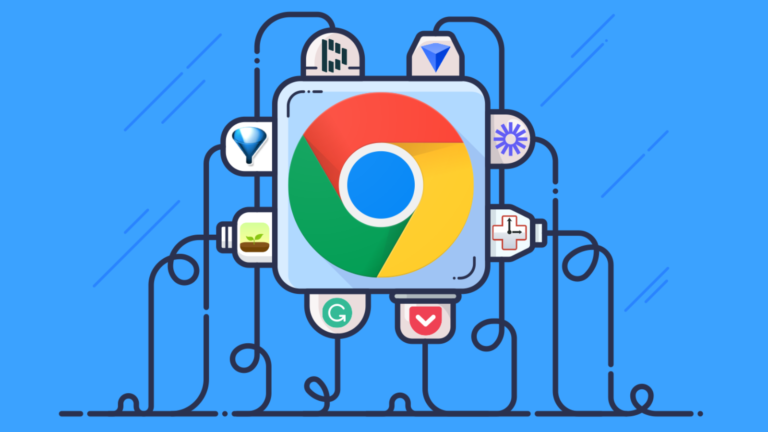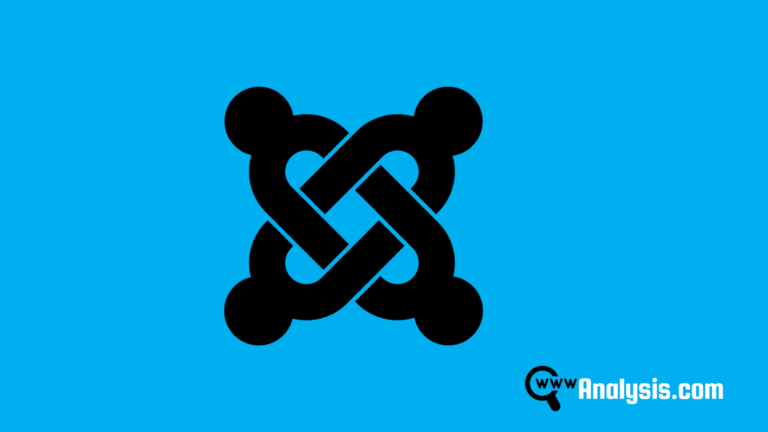
Creating your own Custom GPT model, especially a version akin to ChatGPT, is a fascinating journey into the world of artificial intelligence. This comprehensive guide will walk you through the steps, considerations, and best practices for building a custom ChatGPT, ensuring you’re well-equipped to embark on this innovative endeavor.
Outline
- Introduction to Custom GPTs
- Understanding the Basics of GPT Architecture
- The Evolution of ChatGPT: From GPT-3 to Custom Versions
- Key Components in Custom GPT Development
- Preparing Data for Your Custom GPT
- The Role of Machine Learning in GPTs
- Step-by-Step Guide to Building a Custom GPT
- Fine-Tuning Your ChatGPT Model
- Testing and Evaluating Your Custom GPT
- Deploying Your Custom ChatGPT
- Challenges in Custom GPT Development
- Ethical Considerations in GPT Usage
- Future Trends in Custom GPTs
- Case Studies: Successful Custom GPT Implementations
- Tools and Resources for GPT Development
- Cost Analysis of Building a Custom GPT
- Scaling Your Custom ChatGPT
- Community Support and Forums for GPT Developers
- Custom GPTs in Various Industries
- Security Aspects in Custom GPTs
- Multilingual Capabilities in Custom GPTs
- Custom GPTs for Specific Business Needs
- Personalizing ChatGPT for Unique User Experiences
- Advancements in Natural Language Processing
- FAQs on Creating Custom GPTs
- Conclusion: The Future of Custom GPTs
Custom GPTs
Generative Pre-trained Transformers (GPT) have revolutionized the field of artificial intelligence, especially in natural language processing. Custom GPTs, tailored to specific needs and applications, are becoming increasingly popular. This guide aims to demystify the process of creating your own ChatGPT, offering insights into the technicalities, challenges, and rewards of this exciting endeavor.
Understanding the Basics of GPT Architecture
The foundation of any custom GPT lies in its underlying architecture. Generative Pre-trained Transformers are a type of machine learning model designed for understanding and generating human-like text. This section delves into the basic structure of GPT models, their functioning, and how they can be adapted for custom purposes.
Generative Pre-trained Transformers (GPT), a family of neural network models, have significantly impacted the field of artificial intelligence. Let’s delve into the intricacies of GPT architecture:
-
Foundations of Transformer Architecture:
- At the core of GPT lies the Transformer architecture, introduced by Vaswani et al. in 2017. Transformers excel at capturing long-range dependencies and relationships in data efficiently. They serve as the backbone for many state-of-the-art natural language processing models.
-
The Pre-training Paradigm:
- GPT’s uniqueness stems from its pre-training paradigm. Before fine-tuning for specific tasks, GPT undergoes a two-step process: pre-training and fine-tuning.
- During pre-training, the model is exposed to a massive amount of diverse textual data, learning language intricacies and contextual relationships. This unsupervised learning phase is crucial for the model to develop a broad understanding of language nuances.
-
The GPT Architecture Unveiled:
- Multi-Head Self-Attention Mechanism:
- The core of the Transformer architecture is the attention mechanism. GPT enhances it with a multi-head self-attention mechanism, allowing the model to focus on different parts of the input sequence simultaneously. This enables parallel processing and improved representation learning.
- Positional Encoding:
- Unlike traditional sequence models, Transformers lack inherent information about the order of elements in a sequence. To address this, GPT incorporates positional encodings, ensuring that the model captures the sequential nature of data. This is crucial for tasks requiring an understanding of word order and context.
- Layer-wise Structure:
- GPT consists of a stack of identical layers, each with its parameters. This layer-wise structure enables the model to capture hierarchical features and complex patterns in the data, facilitating scalability and increased capacity for learning intricate relationships1.
- Multi-Head Self-Attention Mechanism:
In the ever-evolving landscape of AI, GPT has reshaped how we approach language-related tasks, from generating human-like text to powering chatbots and more.
The Evolution of ChatGPT: From GPT-3 to Custom Versions
ChatGPT, initially based on OpenAI’s GPT-3 model, has undergone significant evolution. We explore the journey from the original GPT-3 to the development of custom versions, highlighting the advancements and changes that have paved the way for personalized GPTs.
The Evolution of ChatGPT: From GPT-3 to Custom Versions
The journey of ChatGPT has been a fascinating one, marked by significant advancements and adaptations. Let’s explore how it has evolved:
-
GPT-3: The Breakthrough:
- GPT-3 (Generative Pre-trained Transformer 3), developed by OpenAI, is a language model that took the AI world by storm. With 175 billion parameters, it demonstrated remarkable capabilities in natural language understanding, text generation, and context-based responses.
- GPT-3’s ability to generate coherent and contextually relevant text made it a powerful tool for various applications, from chatbots to content creation.
-
Custom Versions: Tailoring for Specific Needs:
- Building on the foundation laid by GPT-3, custom versions of ChatGPT emerged. These versions are fine-tuned for specific domains, tasks, or industries.
- Fine-tuning involves training the base model (like GPT-3) on domain-specific data, allowing it to specialize in particular areas. For instance:
- Medical ChatGPT: Fine-tuned on medical literature, it assists healthcare professionals in diagnosing and answering medical queries.
- Legal ChatGPT: Tailored for legal contexts, it aids lawyers, researchers, and law students with legal research and drafting.
- Technical ChatGPT: Optimized for technical discussions, it helps programmers, engineers, and tech enthusiasts troubleshoot issues and brainstorm solutions.
-
Challenges and Ethical Considerations:
- While custom versions enhance specificity, they also raise ethical concerns. Ensuring unbiased, accurate, and safe responses is crucial.
- Guardrails are implemented to prevent harmful or inappropriate outputs. Striking the right balance between customization and safety remains an ongoing challenge.
-
The Future of ChatGPT:
- The journey continues as researchers and developers explore ways to improve ChatGPT’s capabilities.
- Multimodal ChatGPT, combining text and images, could be the next frontier. Imagine a chatbot that understands both your words and the pictures you share!
- As AI evolves, ChatGPT will adapt, learn, and continue to surprise us with its ever-expanding abilities.
In summary, ChatGPT’s evolution reflects the dynamic landscape of AI, where innovation and responsible development go hand in hand. 🚀🤖
Key Components in Custom GPT Development
Developing a custom GPT requires a deep understanding of several key components, including algorithm selection, training data preparation, model tuning, and deployment strategies. This section provides a comprehensive overview of these essential elements.
Certainly! Building a custom GPT (Generative Pre-trained Transformer) involves several key components. Let’s explore them:
-
Architecture of GPT:
- The GPT architecture, based on the Transformer model, serves as the foundation for creating custom language models. Understanding its building blocks, such as attention mechanisms and positional encodings, is crucial. These components allow the model to capture intricate patterns and relationships within language.
-
Pre-training and Fine-tuning:
- GPT’s effectiveness arises from its two-step process:
- Pre-training: The model learns general language patterns by training on vast and diverse datasets.
- Fine-tuning: The model is tailored to a specific application or domain. Custom GPTs follow a similar process, requiring relevant datasets for both stages.
- GPT’s effectiveness arises from its two-step process:
-
Tokenization and Vocabulary:
- Tokenization: Breaking down text into smaller units (tokens) is essential. Designing a custom tokenization strategy and vocabulary ensures effective processing and understanding of nuances specific to your language domain.
Now, let’s delve into practical steps for creating your custom GPT:
-
Define Scope and Objectives:
- Clearly outline what language tasks you want your custom GPT to excel at. Whether it’s generating creative content, providing domain-specific recommendations, or assisting in customer support, a well-defined scope guides subsequent decisions in the model-building process.
-
Collect and Prepare Training Data:
- High-quality and diverse training data significantly impact performance. Gather a comprehensive dataset relevant to your objectives. Pre-process the data to address noise, duplicates, and formatting inconsistencies.
-
Choose Model Size and Architecture:
- Decide on the size and architecture of your custom GPT. The model size determines the number of parameters, influencing its capacity to learn complex patterns.
Remember, creating a custom GPT empowers you with unparalleled flexibility, allowing you to tailor AI language models to your specific needs. 🚀🤖
Preparing Data for Your Custom GPT
The quality of a custom GPT is heavily reliant on the data used for training. Learn about sourcing, curating, and preparing data sets that will form the backbone of your custom ChatGPT’s training process.
The Role of Machine Learning in GPTs
Machine learning is at the heart of GPTs. This section explores how machine learning algorithms learn from data, adapt to new information, and become capable of generating human-like text responses.
Step-by-Step Guide to Building a Custom GPT
Embark on the practical journey of building a custom GPT. From setting up your development environment to initiating the training process, this guide provides a detailed, step-by-step approach to creating your own ChatGPT.
Fine-Tuning Your ChatGPT Model
Once your custom GPT is up and running, fine-tuning becomes crucial. Discover techniques and strategies for refining your model to improve accuracy, responsiveness, and relevance in its outputs.
Testing and Evaluating Your Custom GPT
Testing and evaluation are critical to ensure your custom GPT performs as expected. Learn about different testing methods, metrics for evaluation, and how to iteratively improve your model based on feedback and performance.
Deploying Your Custom ChatGPT
Deployment is the final step in making your custom GPT available for use. This section covers various deployment models, from cloud-based solutions to integrating your GPT into existing systems or applications.
Challenges in Custom GPT Development
Developing a custom GPT is not without its challenges. From handling large datasets to ensuring model robustness, this section discusses common hurdles and how to overcome them.
Ethical Considerations in GPT Usage
The use of GPTs raises important ethical questions. We delve into considerations like privacy, bias, and the societal impact of deploying AI models like custom GPTs.
Future Trends in Custom GPTs
The landscape of GPT development is constantly evolving. This section looks forward to emerging trends, potential advancements, and the future direction of custom GPTs.
Case Studies: Successful Custom GPT Implementations
Learn from real-world examples where custom GPTs have been successfully implemented. These case studies provide valuable insights and lessons from various industries.
Tools and Resources for GPT Development
A comprehensive list of tools, platforms, and resources that are instrumental in building and maintaining custom GPTs.
Cost Analysis of Building a Custom GPT
Understanding the financial aspects of creating a custom GPT is crucial. This section provides a breakdown of the costs involved in developing, training, and deploying a custom ChatGPT.
Scaling Your Custom ChatGPT
As your needs grow, so must your custom GPT. Discover strategies for scaling your model to handle increased demand and complexity.
Community Support and Forums for GPT Developers
Engaging with a community of like-minded individuals can be invaluable. This section highlights forums, communities, and support networks for GPT developers.
Custom GPTs in Various Industries
Custom GPTs have applications across multiple industries. Explore how different sectors are leveraging these AI models for unique use cases.
Security Aspects in Custom GPTs
Securing your custom GPT is paramount. Discuss the importance of security measures and best practices to protect your GPT model and its users.
Multilingual Capabilities in Custom GPTs
Expanding your custom GPT to understand and respond in multiple languages can significantly enhance its utility. Learn about developing multilingual capabilities in your GPT model.
Custom GPTs for Specific Business Needs
Every business has unique requirements. This section discusses customizing GPT models to meet specific business objectives and challenges.
Personalizing ChatGPT for Unique User Experiences
Personalization is key in making your custom GPT stand out. Explore ways to tailor your ChatGPT to provide unique and engaging user experiences.
Advancements in Natural Language Processing
Stay abreast of the latest advancements in natural language processing (NLP) and how they impact the development and capabilities of custom GPTs.
The Future of Custom GPTs
Reflecting on the journey of custom GPT creation, this conclusion offers insights into the potential future developments and the ongoing impact of these AI models.
Discover the Shocking Ways Virtual Reality (VR) Will Transform Your Life and Gaming Experience
FAQs
- What are the prerequisites for creating a custom GPT?
- How do I ensure my custom GPT is ethically responsible?
- What are the common challenges in training a custom GPT?
- Can custom GPTs be developed for non-English languages?
- How do I integrate a custom GPT into my existing systems?
- What is the expected time frame for developing a custom GPT?
Conclusion
Building your own ChatGPT is an endeavor that blends technical expertise with creative problem-solving. As we step into an era where custom GPTs are becoming more accessible and versatile, the potential applications are only limited by our imagination. Whether it’s for business, education, entertainment, or personal use, a custom GPT can be a powerful tool in your digital arsenal.
What are the prerequisites for creating a custom GPT?
A custom GPT is a specialized version of ChatGPT that can be tailored to specific needs, contexts, or tasks. To create a custom GPT, you need to have the following prerequisites:
A Plus or Enterprise account on OpenAI gives you access to the GPT Builder and the GPT Editor tools.
A clear idea of what you want your custom GPT to do, such as the domain, the actions, the skills, the style, and the audience of your GPT.
A collection of training data that can help your custom GPT learn the relevant knowledge and vocabulary for your domain. This can be in the form of text files, web pages, images, or other sources of information.
A model size and architecture that suits your custom GPT’s complexity and performance. You can choose from small, medium, large, or extra-large models, and different transformer architectures, such as GPT-4, GPT-5, or GPT-6.
A tokenization and vocabulary design that defines how your custom GPT processes and generates text. You can use the default tokenization and vocabulary, or create your own using custom rules and symbols.
A pre-training and fine-tuning process that trains your custom GPT on your data and optimizes it for your specific tasks. You can use the default settings, or adjust the hyperparameters, such as the learning rate, the batch size, the number of epochs, and the loss function.
An evaluation and iteration process that tests your custom GPT’s performance and quality, and allows you to make improvements based on feedback and metrics. You can use the default evaluation methods, or create your own using custom criteria and benchmarks.
How do I ensure my custom GPT is ethically responsible?
Ensuring your custom GPT is ethically responsible is a complex and important task. There are many factors to consider, such as the data you use, the outputs you generate, the users you serve, and the potential impacts of your GPT on society. Here are some general guidelines to help you create a custom GPT that is ethical, fair, and secure:
Follow OpenAI’s usage policies and terms of service, which prohibit harmful or misleading uses of GPTs.
Conduct an ethics review of your GPT’s purpose, domain, and audience. Identify the ethical principles, values, and standards that guide your GPT’s development and use. You can use frameworks like Ethical OS or AI Ethics Canvas to help you with this process.
Curate and preprocess your training data carefully. Ensure that your data is diverse, representative, and relevant to your GPT’s domain. Avoid using data that is biased, inaccurate, outdated, or infringes on privacy or intellectual property rights. You can use tools like [DataSanity] or [DataEthics4All] to help you with this process.
Train and fine-tune your GPT with appropriate hyperparameters and loss functions. Monitor your GPT’s performance and quality during and after training. Evaluate your GPT’s outputs for accuracy, coherence, consistency, and fairness. You can use tools like [AI Fairness 360] or [Ludwig] to help you with this process.
Test your GPT’s behavior and robustness in different scenarios and contexts. Anticipate and mitigate the risks of misuse, abuse, or unintended consequences of your GPT’s outputs. Implement safeguards and controls to prevent or limit harm, such as rate limiting, sandboxing, kill switches, or feedback mechanisms. You can use tools like [AI Dungeon] or [AI Safety Gridworlds] to help you with this process.
Communicate and document your GPT’s design, development, and deployment clearly and transparently. Please explain how your GPT works, what it can and cannot do, and what are the limitations and uncertainties of its outputs. Provide users with information and options to control how their data is used and how they can interact with your GPT. You can use tools like [LIME] or [Model Cards] to help you with this process.
Collaborate and consult with other developers, researchers, experts, and stakeholders in the field of AI ethics. Seek feedback and input from diverse perspectives and experiences. Learn from best practices and case studies of ethical GPT development. You can use platforms like [AI Ethics Lab] or [Partnership on AI] to help you with this process.
https://wwwanalysis.com/how-to-use-free-ai-tools-for-content-creation/





